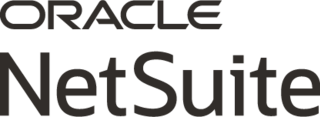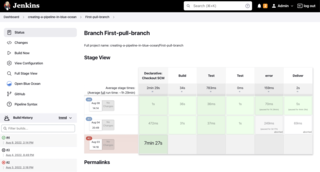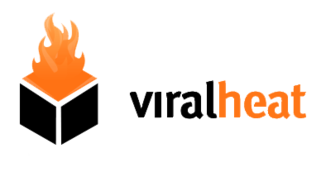
IntelliJ IDEA is an integrated development environment (IDE) written in Java for developing computer software written in Java, Kotlin, Groovy, and other JVM-based languages. It is developed by JetBrains and is available as an Apache 2 Licensed community edition, and in a proprietary commercial edition. Both can be used for commercial development.

MarkLogic is an American software business that develops and provides an enterprise NoSQL database, which is also named MarkLogic. They have offices in the United States, Europe, Asia, and Australia.
Notable issue tracking systems, including bug tracking systems, help desk and service desk issue tracking systems, as well as asset management systems, include the following. The comparison includes client-server application, distributed and hosted systems.

RapidMiner is a data science platform that analyses the collective impact of an organization's data. It was acquired by Altair Engineering in September 2022.

JavaFX is a software platform for creating and delivering desktop applications, as well as rich web applications that can run across a wide variety of devices. JavaFX has support for desktop computers and web browsers on Microsoft Windows, Linux, and macOS, as well as mobile devices running iOS and Android, through Gluon Mobile.

NetSuite Inc. is an American cloud-based enterprise software company that provides products and services tailored for small and medium-sized businesses (SMBs) including accounting and financial management, customer relationship management (CRM), inventory management, human capital management, payroll, procurement, project management and e-commerce software. NetSuite was founded in 1998 with headquarters in Austin, Texas. The company is widely seen as the first cloud computing software company, with its founding pre-dating that of Salesforce by about a month.
Cloudera, Inc. is an American data lake software company.
Lexalytics, Inc. provides sentiment and intent analysis to an array of companies using SaaS and cloud based technology. Salience 6, the engine behind Lexalytics, was built as an on-premises, multi-lingual text analysis engine. It is leased to other companies who use it to power filtering and reputation management programs. In July, 2015 Lexalytics acquired Semantria to be used as a cloud option for its technology. In September, 2021 Lexalytics was acquired by CX company InMoment.

OpenStack is a free, open standard cloud computing platform. It is mostly deployed as infrastructure-as-a-service (IaaS) in both public and private clouds where virtual servers and other resources are made available to users. The software platform consists of interrelated components that control diverse, multi-vendor hardware pools of processing, storage, and networking resources throughout a data center. Users manage it either through a web-based dashboard, through command-line tools, or through RESTful web services.

Jenkins is an open source automation server. It helps automate the parts of software development related to building, testing, and deploying, facilitating continuous integration, and continuous delivery. It is a server-based system that runs in servlet containers such as Apache Tomcat, or by default as a stand-alone web-application in co-bundled Eclipse Jetty. It supports version control tools, including AccuRev, CVS, Subversion, Git, Mercurial, Perforce, ClearCase, and RTC, and can execute Apache Ant, Apache Maven, and sbt based projects as well as arbitrary shell scripts and Windows batch commands.

Viralheat was a subscription-based software service for social media management that helps clients monitor and analyze consumer-created content. It was first released in beta in May 2009. Viralheat raised $75,000 in seed capital in December 2009 and $4.25 million of venture capital from the Mayfield Fund in 2011.

Topsy Labs was a social search and analytics company based in San Francisco, California. The company was a certified Twitter partner and maintained a comprehensive index of tweets, numbering in the hundreds of billions, dating back to Twitter's inception in 2006.

Appcelerator is a privately held mobile technology company based in San Jose, California. Its main products are Titanium, an open-source software development kit for cross-platform mobile development, and the Appcelerator Platform.
AlchemyAPI was a software company in the field of machine learning. Its technology employed deep learning for various applications in natural language processing, such as semantic text analysis and sentiment analysis, as well as computer vision. AlchemyAPI offered both traditionally-licensed software products as well API access under a Software as a service model. After acquisition by IBM in 2015, the products were integrated into the Watson line of products and the brand name eventually disappeared.

GoodData is a software company headquartered in San Francisco, California, in the U.S., with additional offices in Europe and Asia.
Google Cloud Platform (GCP) is a suite of cloud computing services offered by Google that provides a series of modular cloud services including computing, data storage, data analytics, and machine learning, alongside a set of management tools. It runs on the same infrastructure that Google uses internally for its end-user products, such as Google Search, Gmail, and Google Docs, according to Verma et al. Registration requires a credit card or bank account details.
Luminoso is a Cambridge, MA-based text analytics and artificial intelligence company. It spun out of the MIT Media Lab and its crowd-sourced Open Mind Common Sense (OMCS) project.
Runscope is a SaaS-based company that sells software for API performance testing, monitoring and debugging. Runscope is based in San Francisco, California.

Oracle Cloud is a cloud computing service offered by Oracle Corporation providing servers, storage, network, applications and services through a global network of Oracle Corporation managed data centers. The company allows these services to be provisioned on demand over the Internet.












